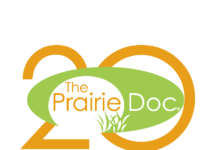A seizure can be one of the most frightening things for a family member, friend, or anyone to witness. However, for some people with epilepsy, seizures may be fairly common and not unexpected. Roughly 1 in 10 people may have a seizure at some point in their lifetime.
A seizure occurs when there is a burst of uncontrolled electrical activity in the brain. This may cause a sudden change in awareness or full loss of consciousness, unusual sensations or thoughts, or temporary problems in muscle tone or movements, such as stiffness, twitching, or limpness.
The two main types of seizures are focal and generalized. A focal onset seizure starts in one area of the brain and spreads, causing mild or severe symptoms. A generalized seizure occurs when both sides of the brain are affected. Generalized seizures may include:
· Absence – which causes a staring spell, the “petit mal” seizure
· Atonic – which causes someone to go limp suddenly
· Myoclonic – which causes sudden body jolts or increased tone briefly
· Tonic – which causes muscle stiffness
· Clonic – which causes muscles to spasm and jerk
· Tonic-clonic – a combination of jerking and muscle stiffness, the “grand mal” seizure
If you witness someone having a seizure, stay with them until the seizure ends and they are fully awake. Stay calm, it should end in a few minutes. Ease them to the floor and turn the person gently to one side which can help them breathe. Clear the area of anything hard or sharp to help keep them safe. Consider putting something soft and flat like a folded jacket under their head. Consider removing their glasses or sunglasses. Loosen ties or anything around the neck.
Not all people who have a seizure need to go to the hospital. Time the seizure and consider calling 911 if the seizure lasts longer than 5 minutes. Other reasons to call 911 include if they have never had a seizure before, if they have difficulty breathing or waking after the seizure, if they have another seizure soon after the first, if they get hurt from the seizure, if it happened in water, or if they have a known health condition like diabetes, heart disease, or are pregnant.
Do not hold the person down or try to stop their movements. Never put anything in their mouth or forcefully open a tightly clenched jaw, since that could harm them. It is a myth that someone having a seizure is in danger of swallowing their tongue.
After the seizure, the person is likely to be unconscious or sleepy for a few minutes more. This is the post-ictal phase, when the brain is still very active and trying to contain the electrical impulses. Once someone is alert, they are likely to be sore, confused, or frightened themselves. Tell them what happened in a calm and simple manner.
Seizures can be quite frightening to witness, but with some knowledge, you may be better prepared to help.
Andrew Ellsworth, M.D. is part of The Prairie Doc® team of physicians and currently practices family medicine in Brookings, South Dakota. Follow The Prairie Doc® at www.prairiedoc.org and on Facebook and instagram featuring On Call with the Prairie Doc® a medical Q&A show celebrating its 22nd season
of health information based on science, built on trust, streaming live on Facebook most Thursdays at 7 p.m. central.




